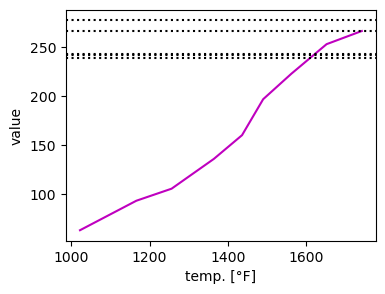In France we had the fancy induction cooktop, and the camper had gas burners, but now we're back in Michigan with the good old resistive coils I've used most of my life. One thing that's always struck me about these stoves is that then when turned on high, the coils glow red. This is due to black-body radiation, which is the spectrum of light emitted by objects depending on their temperature. For an ideal black-body, the color and brightness will be entirely dependent on the temperature. I wondered whether I could use this to find the temperature the stove heats to:
The Wikipedia page for black-body radiation has a nice chart of the overall color for different temperatures:
| Wikipedia |
We can get the RGB values of those colors and compare to those from the stove picture:
The solid lines represent the values from the chart, while the dotted lines are samples I took from the image. The red and green aren't bad, but you can see my samples have way too much blue for a true black-body. Ideally, a black-body shouldn't reflect any light, absorbing it all instead. This brought to mind Vantablack, but I'm not sure how that would stand up to high temperatures, and it seems like a dangerous world to get into.
To resolve the discrepancy in color distribution, let's try looking at the overall brightness by taking the root sum squared for the above:
For 3 out of the 5 samples, we get a crossing at around 1600°F. I couldn't find a definitive source for maximum stovetop temperatures, but I found a Reddit post that suggests the range 1470°F to 1652°F, agreeing nicely with my measurements!
The neat thing about black-body radiation is how universal it is: When a welder heats metal to the same brightness as the Sun, it's because they're the same temperature, and the whole universe is still glowing from the heat of the Big Bang!



No comments:
Post a Comment